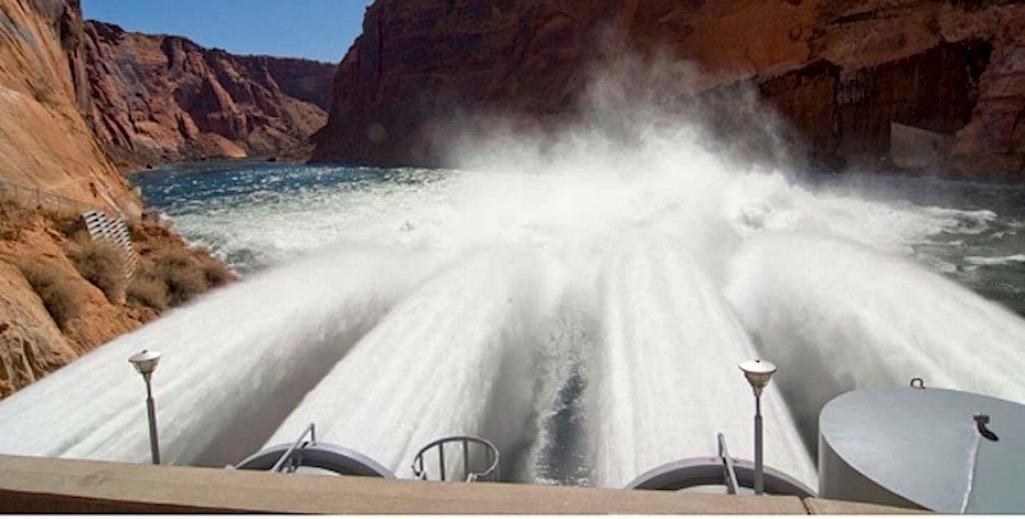
High flows will be released from Glen Canyon Dam into the Colorado River as it runs through Grand Canyon National Park/NPS file
The Colorado River will be rocking and rolling through Grand Canyon National Park later this month as a "spring disturbance flow" is released from Glen Canyon Dam upstream.
The release is set for March 15 to 26. The operation will coincide with required maintenance on the concrete apron downstream of the dam and powerplant. The spring disturbance flow will not affect the monthly or annual release volumes from Lake Powell.
Lake Powell releases through Glen Canyon Dam will be reduced to 4,000 cubic feet per second beginning March 15. Flows will begin a gradual increase on March 20, will peak at 20,150 cfs on March 22 and will remain steady at that level until March 25. Typical flows in March range from a daily low of 8,000 cfs to daily highs around 15,000 cfs.
Standard operations will resume on the morning of March 26.
The disturbance flows are designed to simulate a spring-timed runoff event. As the changing flows disturb river bottom habitats, ecosystem responses may include elevated algae and insect production resulting in increased aquatic insect prey for endangered humpback chub, non-native rainbow trout, and other wildlife.
The flows also may affect the non-native brown trout in Glen Canyon by reducing survival of emerging young, which may help protect native fish in the river. Scientists will study the effects of the modified flows in Glen, Marble, and Grand canyons and the resulting data may be used to make future recommendations on how to better support the Colorado River ecosystem.
"Scientific studies like these are an important part of our obligation to effectively balance the need for water and power resources with responsible stewardship of the Colorado River ecosystem," said U.S. Bureau of Reclamation's Upper Colorado Basin Regional Director Wayne Pullan. "This spring disturbance flow was developed and proposed by agency experts from the Bureau of Reclamation, U.S. Geological Survey, and Western Area Power Administration in close collaboration with Colorado River stakeholders, with strong support from environmental and recreational interests. I applaud the partnership and collaboration of the Glen Canyon Dam Adaptive Management Work Group, including all seven basin states and five Native American tribes, to continue our successful adaptive approach to managing Glen Canyon Dam."
Additional information about this release will be posted and updated online at: https://www.usbr.gov/uc/progact/amp/DisturbanceFlow.html



Comments
If we would stop issuing building permits downstream or at least limt them to multi family only downstream from Powell, Mead etc. we would be benefiting nature, conserving water and not have to hear outlandish theories about emptying Lake Powell, the cost of this to and punitive attitude is short sided.
The one thousand year comment is blunted by two other studies showing that the drought may end in the next 5 years, lets stop using selective science to make an argumnet to fit ones individual view, or at least acknoledge that other university studies and climate pattern studies holding differing predictions.
After all climate forecasting is a prediction by default as a result of it being in the future...
Well, okay then, it's all coming clear to me now. If we just plant some bubblegum trees on the slopes of the Big Rock Candy Mountains, we can have crystal fountains where springs will gush lemonade that flows down through the rocks and into a lake of stew ...where we'll all paddle around in a big canoe. The trees will all have fruit and barns will fill with hay. All the chickens will lay soft-boiled eggs and we'll never change our socks. Oh, I'm bound to go where there ain't no snow, where the rain don't fall and the winds don't blow, in those Big Rock Candy Mountains.
Oh, if only that's all it's going to take to have common sense, it'll be easy for us to have good governance.